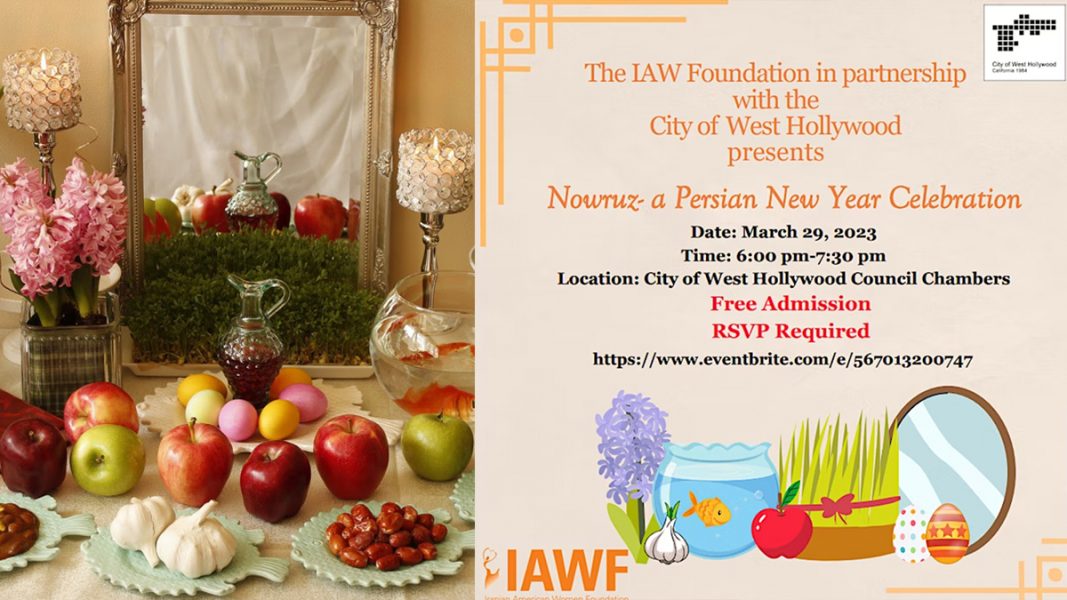
Nowruz, also spelled as Norooz or Nauruz, is a Persian holiday that marks the beginning of the Persian new year. The word “Nowruz” means “new day” in Persian. It is celebrated on the vernal equinox, which usually falls on March 20th or 21st, and marks the first day of spring.
Nowruz has a long and rich history, dating back to the ancient Persians and their Zoroastrian religion. It was originally a Zoroastrian festival, celebrating the beginning of the new year and the triumph of good over evil.
With the advent of Islam in Persia, Nowruz continued to be celebrated as a secular holiday and has remained an important cultural event for Iranians and other Persian-speaking communities. Over time, Nowruz has also been influenced by other cultures and religions, such as the Arab, Turkish, and Central Asian cultures.
Nowruz has also played a significant role in Persian literature and poetry. Many famous poets and writers, such as Hafez and Saadi, have written about the joys and traditions of Nowruz.
In recent years, Nowruz has gained global recognition and has been celebrated by various communities around the world. In 2010, the United Nations recognized March 21st as the International Day of Nowruz, highlighting the cultural significance of the holiday and promoting cross-cultural understanding and dialogue.
Nowruz celebrations typically last for 13 days, with the first day of the new year being the most important. In the days leading up to Nowruz, people prepare for the holiday by cleaning their homes, buying new clothes, and preparing traditional foods.
Before the arrival of Nowruz, people perform house cleaning and buy new clothes to wear for the New Year. Visiting family and friends is also an important part of the celebration, and people are offered tea and pastries, cookies, fresh and dried fruits and mixed nuts. Food preparation is also common, with Samanu being one of the most common foods cooked. A Haft-sin table is set up with seven items starting with the Persian letter “س,” including Sabze, Samanu, Persian olive, vinegar, apple, garlic, and sumac.
The Haft-sin table may also include a mirror, candles, painted eggs, a bowl of water, goldfish, coins, hyacinth, and traditional confectioneries.
In Afghanistan, people prepare Haft Mewa, a mixture of seven different dried fruits and nuts served in syrup. Khoncha is the traditional display of Novruz in Azerbaijan, consisting of a big silver or copper tray with a tray of green, sprouting wheat (samani) in the middle and a dyed egg for each member of the family arranged around it. In Iran, Amu Nowruz and Haji Firuz are the traditional heralds of the festival, with Amu Nowruz bringing children gifts and Haji Firuz dancing and playing music.

I often return to my home and celebrate Nowruz with my family.
Nowruz. Celebrated by Parsis, also originally from Persia, who practice Zoroastrianism. It is call Navroz. The West Coast of India is home to Persians that took their faith and their people to India in the 8th and 9th centuries. This was as a result of a rebellion after the last Sasanid king died in 651 and Islam came to Persia. The welcoming of the New Year remains the same for both faiths in Persia and in Parsi regions of India. Wonderful, traditional food, song, dancing and gatherings of friends and families take place; celebrated worldwide wherever Parsi communities exist.
Tell me something I don’t know. We celebrated with my Persian daughter in laws family last Monday! I think celebrate with your family as you please. Keep governments out of celebrations for everything else. So not news.
Yes, Seasonal Celebrations are wonderful because they unite all, cultural and religious affiliations might consider not getting involved with government. Separation of Church & State
I hope that the city shows equal reverence to the holiday of Passover, which is coming up next month as they are showing to this holiday!
Pesach begins April 5. We shall see; as it also collides with Good Friday and Easter on the 7th and 9th.
Although a lover of Persian food, it seems interesting that this is the only event on the IAWF Calendar. How did it happen that it would be held in West Hollywood City Council Chambers?